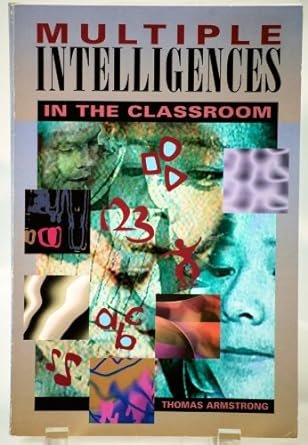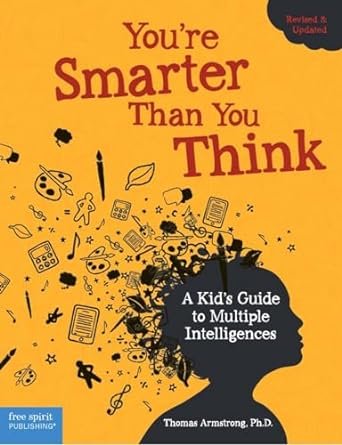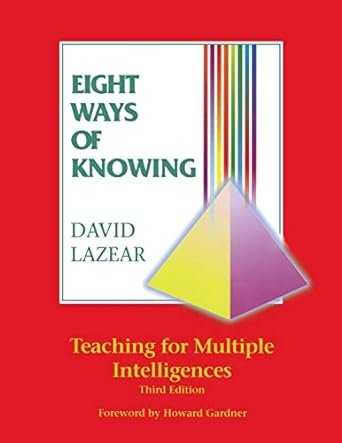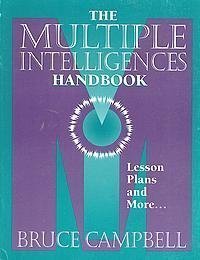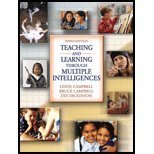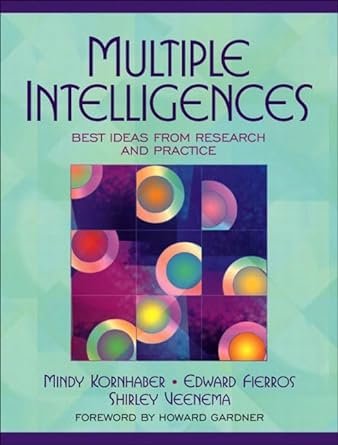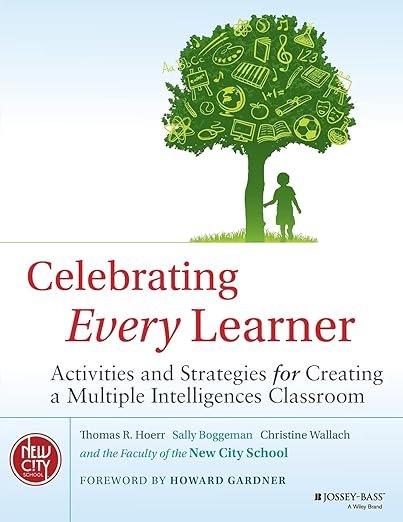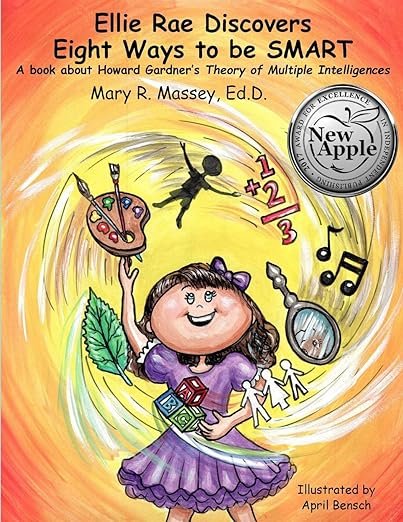BY SHINRI FURUZAWA
When Howard Gardner first published Frames of Mind: The Theory of Multiple Intelligences in 1983, he could not have predicted the reach and influence this work would have. MI theory has undoubtedly changed the way many people think of human intelligence; and its impact, particularly on the world of education, has been striking.
MI theory is based on evidence in support of the following propositions:
Individuals can have many kinds of intelligences (one could call these talents, abilities, or skills) which may be useful to society.
A single measure, such as an IQ test or SAT exam, is inadequate for determining an individual’s capabilities and potential.
The main implications for education:
Any subject can be approached in many ways to access and take advantage of different intelligences (pluralization).
Teaching can be tailored to a student’s intelligences (individuation).
The impact MI theory has had is different from other education research endeavors from Harvard Project Zero, the research organization at Harvard Graduate School of Education with which Gardner has been associated for almost 6o years. MI theory was not accompanied by educational frameworks and tools as with most Project Zero endeavors. In addition, there are no “Gardner-approved” tests, textbooks, or curricula based on the theory. The closest Gardner has come to developing such tools was the creation of Project Spectrum materials for children aged 3-7.
One measure of success for education research and practice is how specific ideas and approaches are brought to scale. In the article, The Multiple Meanings of Scale: Implications for Researchers and Practitioners, the authors Morel et al. explore a typology of scale: adoption, replication, adaptation, and reinvention. Through these conceptualizations, I propose to explore the scaling of MI theory.
Adoption
Multiple Intelligences International School, Quezon City, Philippines
Adoption as a concept of scale defined by Morel et al. is when new ideas that may contradict the consensus opinion result in changing assumptions and practices. Even when adoption is superficial, there may be a “network effect” which can be cumulative and lead to wider spread adoption.
There are thousands of educational institutions worldwide that have been influenced by MI theory. More impressive, there have also been numerous schools around the world founded on its principles. Prominent among them are the Indianapolis Key Learning Community under Pat Bolanos, and New City School in St Louis, Missouri, under Tom Hoerr. Just a few examples of MI schools outside the US include: Multiple Intelligences International School (Quezon City, Philippines), Golden Bells MI School (Delhi, India), Howard Gardner School (Cesar, Colombia), and Multiple Intelligence School (Fiji).
Policymakers around the world have promoted progressive approaches to education based on MI theory to varying degrees in England, Scotland, China, Korea, and Norway. The book, Multiple Intelligences Around the World, edited by Jie-Qi Chen, Seana Moran, and Howard Gardner includes chapters on how MI ideas have been adopted at schools, communities, and countries across the globe. The book coalesced in 2006 after Branton Shearer organized a symposium on global perspectives on MI with the American Educational Research Association. Several of the participants were asked to write about their experiences for the book.
In recent years, due to the leadership of Professor Rex Li, Hong Kong has become a center for MI educational practice and research. Li has published Research MI Magazine since 2021 and founded the Multiple Intelligences School Network. Li has also organized three International MI Education Forums, most recently in 2023, bringing together MI researchers and practitioners from around the world.
Importance of Context
Why has MI theory been adopted in some countries but not others? Gardner has analyzed the conditions required for adoption in terms of the metaphor of “fertile soil.” In some cases, the soil may be “unfertile”—as, for example when institutions are pursuing goals hostile to progressive education (e.g., focusing only on test scores). In other cases, the soil may be initially “resistant” to MI, but come eventually to absorb the ideas. And sometimes the soil may be fertile with interest in progressive ideas, but the system already in place is perceived to be working well.
The education landscape tends to be most fertile when policymakers are actively seeking new pedagogies. This may be due to reasons such as:
Recognition that the education system has too narrow a focus e.g. on STEM at the expense of arts and humanities, or that it is not catering to certain students e.g. those who are gifted, or exhibit learning differences.
Desire for more democratic values as a reaction to a repressive political context e.g. as in Argentina or Romania.
Replication
In terms of replication as a concept of scale, an education innovation is considered to have scaled when it is widespread and implemented faithfully with predicted results.
Frames of Mind in Romanian
Gardner’s words and ideas have certainly been replicated around the world, though whether those ideas have been implemented faithfully with expected results would be impossible to measure. Gardner’s books on MI theory have been translated into multiple languages, including: Arabic, Chinese, Czech, French, German, Georgian, Hebrew, Italian, Japanese, Korean, Norwegian, Portuguese, Romanian, Russian, Slovenian, Spanish, Swedish, and Vietnamese. He has been invited to visit many of these countries and is also in regular contact with educators from across the globe. However, Gardner is not and cannot be responsible for the appropriateness or the success of the implementations.
Books on MI theory and its application by other authors, such as Thomas Armstrong, Tom Hoerr, David Lazear, Mindy Kornhaber, and Linda and Bruce Campbell, have led to what Gardner has lightly dubbed an “MI industry.” There are also many books on MI written in other languages, especially Chinese. Hundreds—perhaps thousands—of doctoral theses and scholarly articles have also been written about MI theory.
Adaptation
Another conceptualization of scale is when an innovation is adapted or modified to meet local needs. As noted, Gardner has never prescribed a curriculum or test. He had no wish to micro-manage; rather he hoped to encourage people to implement MI theory in ways that made sense to them. As he explains,
“There is wisdom in not trying to control what people do with one’s ideas.”
In the absence of an official MI test, many have developed their own measurement instruments, the best known of which is Branton Shearer’s MIDAS test. Some kind of assessment instrument is often sought by educators and policymakers. Gardner is not opposed to such measurements and often mentions them to educators. He advises the use of triangulation to make use of different sources of data e.g. teacher assessment, self-assessment, and parental input.
More generally, Gardner believes performance measures that involve demonstrating an intelligence (rather than written tests) are the most reliable, e.g. observing how individuals handle conflict to assess interpersonal intelligence, or how they learn routes in a new environment to assess spatial intelligence. Self-assessment by itself is not as reliable; people are not necessarily insightful about themselves and may confuse likes and preferences with their actual strengths.
In the absence of an official MI curriculum, many companies and institutions have developed their own. From a simple internet search, examples include Tutor Time, Positive Action, The Complete Daily Curriculum for Early Childhood, and many others. None are endorsed by Gardner—indeed Gardner never endorses any commercial project as a matter of principle.
Of course, many teachers incorporate the two educational principles of MI theory, individuation and pluralization, into daily practice without use of a particular curriculum. Some examples of the ways in which teachers have used MI theory to meet their student needs can be found here, here, and here.
Reinvention
Reinvention is a concept of scale which denotes an innovation that transforms into other new ideas or innovation. When it comes to MI theory, perhaps the best example of this is Daniel Goleman’s idea of emotional intelligence. His book, Emotional Intelligence: Why It Can Matter More Than IQ, was published in 1995, twelve years after Frames of Mind and is based on some of the same principles and findings as MI theory. A bestseller in multiple countries, Goleman’s book helped popularize the idea that there is more than one intelligence. “Emotional intelligence” can be described loosely as a combination of Gardner’s interpersonal and intrapersonal intelligences with the addition of a value component. Goleman would claim that it’s necessarily good to have emotional intelligence, while Gardner would respond that any intelligence can be used constructively or destructively. Goleman’s later ecological intelligence can be linked to Gardner’s naturalist intelligence. Many people have suggested other intelligences over the years, such as digital intelligence, business intelligence, or humor intelligence. However, Gardner’s intelligences are based on strict criteria for what constitutes an intelligence. As detailed in Frames of Mind, an intelligence must have:
identifiable core operation(s);
evolutionary history and plausibility;
recognizable end-state and distinctive developmental trajectory;
existence of savants, prodigies and other individuals distinguished by the presence or absence of specific abilities;
potential isolation by brain damage;
support from experimental psychological tasks;
support from psychometric findings;
susceptibility to encoding in a symbol system.
Most suggested new intelligences would not meet these criteria.
Lethal Mutation
One potential issue mentioned by Morel et al. in their conceptualizations of scale is lethal mutation. In this case, an innovation is adopted but misapplied or misunderstood, often in such a way that it runs counter to the ideas behind the initial innovation. As Gardner writes in A Synthesizing Mind,
“Once you launch a meme in the wider world, particularly one that can be easily summarized if not synthesized, you simply cannot control its trajectories.”
One example of this is dermatoglyphics, the erroneous (indeed ludicrous) idea that an individual’s fingerprints reveal their intelligences. Another example is the education program in Australia that used MI theory to classify ethnic groups according to which intelligences they may or may not have. Gardner appeared on television in Australia to publicly repudiate this idea.
Other misrepresentations of MI theory have recently been described in this blog post by Annie Stachura. Some examples include confusing MI with learning styles, including an intelligence that is not part of Gardner’s theory, thinking that intelligences are linked to stages of development, and thinking that all individuals excel in at least one intelligence.
Conclusion
While scaling can be an indicator of success, it is essential to look beyond expansion metrics. Success in education requires a balance between reaching more learners and ensuring that the quality of educational experiences are maintained or enhanced. In addition to the importance of pluralization and individuation, MI theory acknowledges intelligences that are not conventionally academic, such as interpersonal; this acknowledgement has in turn led to a greater emphasis on developing skills such as collaboration and critical thinking and has provided a strong foundation for inclusive education practices. By recognizing that students have different intelligences, educators are better equipped to support learners with different strengths and weaknesses. This inclusivity helps to ensure that all students have the opportunity to succeed in their own ways and on their own terms.
The impact of MI theory is so widespread that many people accept its principles without knowing the name Howard Gardner or without having heard of the phrase “multiple intelligences.” And Gardner is happy with that outcome. He once explained the enormous impact of MI theory with typical modesty as, “an idea whose time had come.”
I would like to thank Howard Gardner, Ellen Winner, and Annie Stachura for their valuable comments and suggestions on an earlier version of this blog post.
References
Chen, J.-Q., Moran, S., & Gardner, H. (2009). Multiple intelligences around the world (1st ed.).
Jossey-Bass.
Gardner, H. (2011). Frames of Mind: The theory of multiple intelligences. Basic Books.
Gardner, H. (2020). A Synthesizing Mind: A memoir from the creator of multiple intelligences
theory. The MIT Press.
Gardner, H., Feldman, D. H., Krechevsky, M., Chen, J.-Q., & Harvard Project Zero. (1998).
Project Zero Frameworks for Early Childhood Education. Teachers College Press.
Morel, R. P., Coburn, C., Catterson, A. K., & Higgs, J. (2019). The Multiple Meanings of Scale:
Implications for Researchers and Practitioners. Educational Researcher, 48(6), 369–377.
https://doi.org/10.3102/0013189X19860531
Banner Photo by Koen Emmers on Unsplash





